The Brazos Review: AMD's E-350 Supplants ION for mini-ITX
by Anand Lal Shimpi on January 27, 2011 6:08 PM ESTAMD has been curiously absent from the value netbook and nettop segments since Atom’s arrival nearly three years ago. These markets are highly profitable only for component vendors, as the OEMs that sell netbooks and nettops must survive on very slim margins in order to hit aggressive price points. It wasn’t too long ago that we were shocked by $699 desktop PCs, but to now be able to get a fully functioning portable PC with display at below $300 is impressive. In order for the profit equation to work out however, you can’t simply scale down a larger chip - you need an architecture targeted specifically at the type of very light workloads you expect to encounter in these segments. Underclocking and undervolting an architecture targeted at high end desktops or servers won’t cut it.
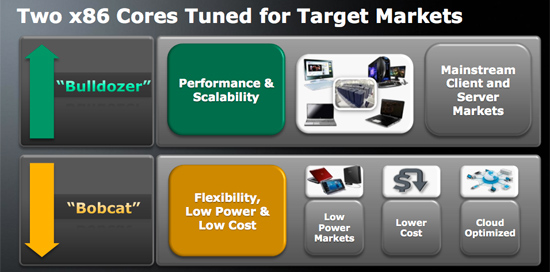
Generally a single microprocessor architecture can cover an order of magnitude of power envelopes. You can take an architecture from 10W - 100W using clock speed, voltage scaling and disabling features (e.g. cutting cache sizes). You can’t efficiently take a 100W architecture and scale it down to 1W. Intel realized this with Atom, and what resulted was a new architecture designed to span the 0.5W - 5W range. Given the constraints of the process (Atom was built at 45nm) and a desire to keep die size down to a minimum (and thus maximize profits), Intel went with a dual-issue in-order architecture reminiscent of the old Pentium - but with a modern twist.
AMD came to the same realization. For it to compete in these value markets, AMD couldn’t rely on its existing Phenom II derived architectures. The Phenom II and its relatives currently span a range of TDPs from 9W to 140W, and at the lower end of that spectrum we’re talking about some very low clock speeds and performance targets. Getting down to 1W was out of the question without a separate design.
What AMD came up with was a core called Bobcat, initially targeted for netbooks, notebooks, nettops and entry level desktops. Architecturally Bobcat is a significant step ahead of Atom: while still dual-issue, it features an out-of-order execution engine making it the Pentium Pro to Atom’s Pentium.
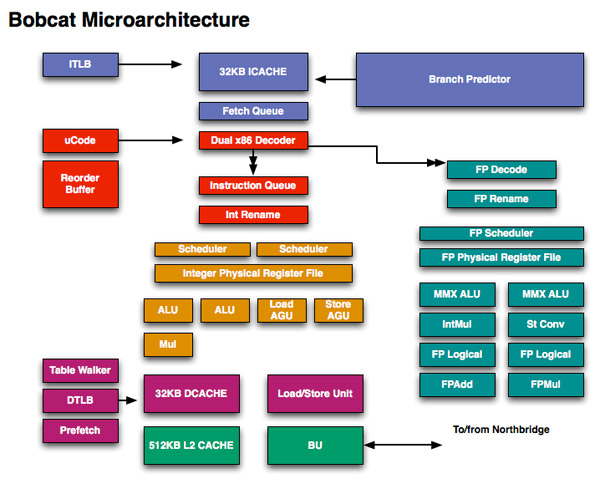
It isn’t just CPU architecture that AMD surpassed Atom with, the first incarnation of Bobcat is an integrated SoC with on-die DirectX 11 GPU. AMD calls this combination a Fusion APU (Accelerated Processing Unit) as it places both a CPU and GPU on a single die. The possible CPU/GPU combinations for Bobcat based APUs are listed in the table below:
| AMD Brazos Lineup | ||||||||
| APU Model | Number of Bobcat Cores | CPU Clock Speed | GPU | Number of GPU Cores | GPU Clock Speed | TDP | ||
| AMD E-350 | 2 | 1.6GHz | Radeon HD 6310 | 80 | 500MHz | 18W | ||
| AMD E-240 | 1 | 1.5GHz | Radeon HD 6310 | 80 | 500MHz | 18W | ||
| AMD C-50 | 2 | 1.0GHz | Radeon HD 6250 | 80 | 280MHz | 9W | ||
| AMD C-30 | 1 | 1.2GHz | Radeon HD 6250 | 80 | 280MHz | 9W | ||
AMD avoided branding its first APUs, they’re simply the AMD E-series and C-series Fusion APUs. The emphasis isn’t on the CPU or the GPU in this case, just the company name and a model number.
| CPU Specification Comparison | ||||||||
| CPU | Manufacturing Process | Cores | Transistor Count | Die Size | ||||
| AMD Zacate | 40nm | 2 | ? | 75 mm2 | ||||
| AMD Thuban 6C | 45nm | 6 | 904M | 346mm2 | ||||
| AMD Deneb 4C | 45nm | 4 | 758M | 258mm2 | ||||
| Intel Gulftown 6C | 32nm | 6 | 1.17B | 240mm2 | ||||
| Intel Nehalem/Bloomfield 4C | 45nm | 4 | 731M | 263mm2 | ||||
| Intel Sandy Bridge 4C | 32nm | 4 | 995M | 216mm2 | ||||
| Intel Lynnfield 4C | 45nm | 4 | 774M | 296mm2 | ||||
| Intel Clarkdale 2C | 32nm | 2 | 384M | 81mm2 | ||||
| Intel Sandy Bridge 2C (GT1) | 32nm | 2 | 504M | 131mm2 | ||||
| Intel Sandy Bridge 2C (GT2) | 32nm | 2 | 624M | 149mm2 | ||||
These APUs do need the aid of an additional chip - the Hudson Fusion Controller Hub (FCH). The FCH adds support for things like SATA, USB, Ethernet and Audio.The Hudson FCH is very tiny measuring approximately 4mm x 7mm for a total die size of around 28mm2.
The combination of these Bobcat based APUs and the FCH is called the Brazos platform.
Late last year AMD invited me to spend several hours with a Brazos system at its brand new campus in Austin, TX. While the preview gave us some insight into what we could expect from Brazos, I didn’t have enough time to really dive in as much as I would’ve liked to.
Earlier this month, AMD officially launched Brazos with hardware expected sometime this quarter. For the past couple of weeks I’ve been testing a Brazos mini-ITX motherboard from MSI and today, it’s time to break the silence and share the results. They are quite good.


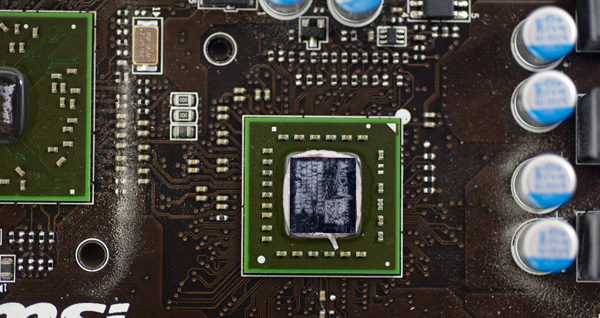
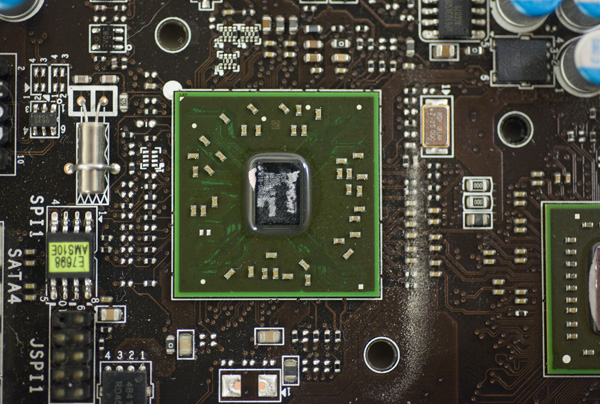
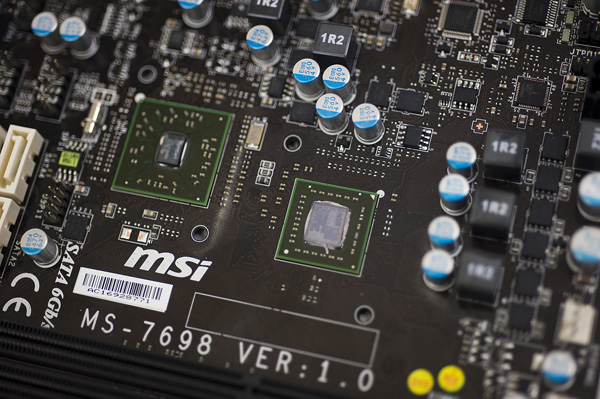
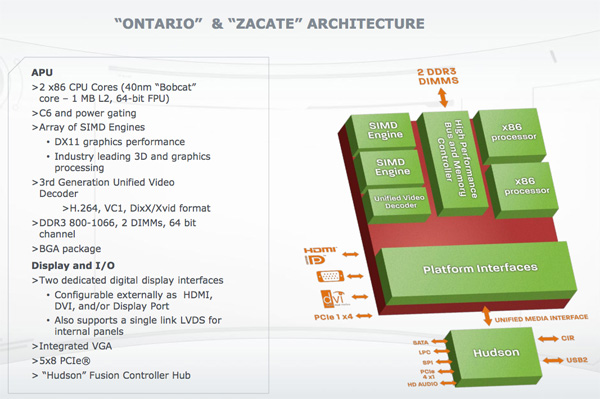








176 Comments
View All Comments
StardogChampion - Friday, January 28, 2011 - link
A low-powered mini-ITX board with 4-5 SATA III ports, maybe a eSATA (Hudson FCH supports 6 x SATA) port and PCI-e slot for adding a SATA controller card (even if it's x4 it's still better than PCI) for $100 has me thinking home server. I don't see a board out there that comes close to these features at this price. If you want a D510 board with 6 x SATA II you have to shell out $200. Take one of these E-350 mini-itx boards, put it in a Lian-Li Q08 case with a bunch of 2TB drives, Amahi/WHS/etc. and you've really got something. It's a waste of GPU but how do you beat it?And, for building friends/family/neighbors desktops to replace the big outdated tower sitting on the floor that they just use for surfing, email, MS Office: once this comes out I'll never build another big tower again.
fr500 - Friday, January 28, 2011 - link
Using mainstream games for this reviews make little sense. It would be better to show it with some good indie games at 720p, say super meat boy (won't run well on an i3 530's IGP or an 9300-ITX IGP for instance it needs good steady FPS to be playable).Maybe Braid, Trine, Torchlight.
I don't see many people using this for MW2.
ProDigit - Friday, January 28, 2011 - link
I would have preferred to see the E-350 compared to an Atom N550,especially with power consumption.I believe the N550 beats the crap out of the E-350 (power-wise). After all, I guess AMD wants to put this apu in netbooks, no?
LeftSide - Friday, January 28, 2011 - link
Does anybody know if bobcat is going to support ecc ram? I want to build a low power server with ecc ram.msroadkill612 - Friday, February 4, 2011 - link
I have read it doesntAmdInside - Friday, January 28, 2011 - link
Will it run Angry Birds?kenyee - Friday, January 28, 2011 - link
Wish you touched more on that...that's listed as a weakness, but nothing about whether anything this year will be able to decode 3D bluray movies...bjacobson - Saturday, January 29, 2011 - link
what are people using OpenCL at this point these days for anyways?spiked_mistborn - Saturday, January 29, 2011 - link
I agree with you geekfool. Where are the OpenCL or DirectCompute benchmarks (especially OpenCL since that is cross-platform and seems to be building steam)? This article does not feel complete without some type of GPU acceleration test since that is one idea that AMD has been pushing since we first started hearing about fusion. The idea was that the low performance of the cpu core on compute intensive workloads could be compensated for by shifting highly parallel workloads to the SPs. If I remember correctly Intel recently released OpenCL support for their CPUs, and there are also upcoming ARM based SOCs that will have OpenCL support.While OpenCL may not matter to everybody today, I think that in a couple of years any devices that are released that don't support it will be skydiving without a parachute.
Klimax - Saturday, January 29, 2011 - link
Just few things:What board with D510 was used and was it with latest BIOS?
I have noticed that after new BIOS is loaded on intel boards I get about ~20% increase in write and ~10% in read performance on SSD. Along with few percent on graphics benches. (Tested between October and January)
Could somebody here test it? (I used BLKD510MO as cheapest D510 board with 1GB DDR2 and Win7 x64 and cheap Kingston SSD)
This is somewhat missing IMHO.
Thanks.